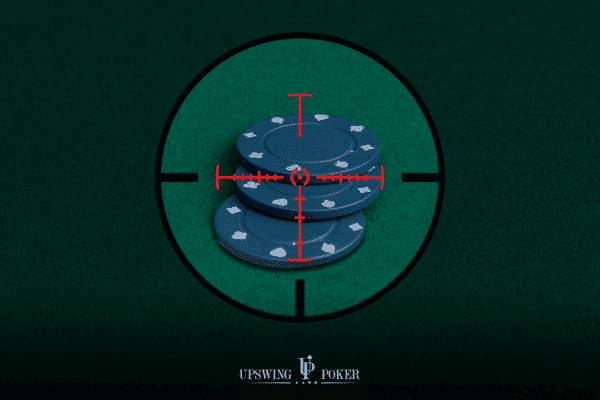Limping Poker Strategy
$1000 Bonus Accepts US Players Soft Games. $25 Free $1,000 Bonus. ACR ♠ 27% RB ♠ $1000 Bonus. Limping in is a poor poker strategy. It makes playing post flop poker harder, you are less likely to win and more likely to get bluffed out too. By adopting this style, you are inviting better players to abuse you before and after the flop and put you in awkward positions.
Open limping is never good at any limit, but it is even more transparent in the micro stakes. An open limp is when a player enters the pot for nothing more than the big blind. If there is a raise ahead and a player makes a call, it is not considered an open limp. There are many arguments against open limping, and few arguments in support of open limping. The players who think that open limping is a profitable play, however, are almost certainly losing players. There are so many reasons to adapt an aggressive playing style instead of a lazy, passive, open limping playing style. No Limit games are built for unrelented aggression; by limping into a pot, you are sacrificing your ability to make plays and put pressure on your opponents.
As bad as open limping is, there are some situations where limping behind other players will make perfect sense. There is a significant difference between limping behind other callers and being the first to enter the pot with a limp, though. If you are in late position with a small pocket pair, for example, limping in will be the most viable move when there are other players already in the pot for the minimum. Raising in this spot will seldom garner folds from everyone, and it will reduce the inherent value that your hand has when it is able to flop a set. In addition to small pocket pairs, suited connector type hands are also great candidates for late position limps. This is just about where the limping range ends, though, so don’t be looking to enter a ton of pots in late position just because it would be cheap. If you start to play too many pots simply because it will cost you a relatively small amount, eventually you will be chipping away at a significant amount of your bankroll. One limp here and one limp there is a perfect recipe for a decreased or eliminated win rate.
Why Open Limping is Bad
Open limping is bad for many reasons, with some being more obvious than others. The first reason that an open limp is bad is because it makes your hand very see-through. Unless you are trying to get tricky with a big hand (which, by the way, is a bad idea in micro stakes games), the best plan of action is to make a raise with any hand that is truly worth playing. Pretend that you have JQ off suit in early position while sitting in a 50NL full ring game. This is the type of hand that a lot of weak 50NL players would look to limp in with. Instead of limping in, though, you should simply toss it into the muck. You might think that you are sacrificing a fair amount of value by mucking your hand without even seeing the flop, but this just isn’t the case. The truth is that a hand like JQ, JK, QT etc. is just not that strong in position, let alone out of position.

If you have a hand like 66, 77, 88 etc. as opposed to JQ or JK, however, you should be looking to see the flop. The best play with these hands in early position is to make an open raise to get the action started. When you raise, you will either get folds around the table, or you will get a few callers. In either situation, there is a lot of room for profitability. On the occasions where you happen to face some opposition, it will be easy to let go of your hand and move onto the next one. This is another reason that making open raises with mid range to decent hands is beneficial. Instead of limping in and being faced with a tough decision, you are putting the pressure on your opponents. Plus, when you end up getting re-raise, you will have lost a minimal amount. It is much better to raise and have a good shot at winning than it is to limp in and reduce your chances of success significantly. An open limp says, “Hey, I don’t have much, so I will enter for the minimum.” A good opponent will see this and pounce on your weakness. Don’t be weak and don’t play scared, unless you hate money, of course.
Arguments for Open Limping
There are plenty of players who will argue to the death that open limping is a smart play. More than 9 times out of 10, however, these players are not turning a legitimate profit. Some of the most common arguments for open limping include, but are not limited to:
“Open limping is a cheap way to see the flop.”
-Is open limping a cheap way to see the flop? Yes, of course it is. Now, think about how many times a small, miniscule, weak investment has paid off for you in life, let alone at the poker table. A cheap way to see the flop also means a cheap way to try and get paid off. If you aren’t willing to let your cards (and more importantly, money) do the talking, you should skip out on the hand altogether.
“If I hit I will get paid off.”
-While it is true that your hand will be deceptive, it is hardly a guarantee that you will get paid off. Say that you limp into the pot in early position with a hand like JQ off suit. If it limps around and the flop comes JQ7, how many hands do you really think are going to pay you off? It is very unlikely that someone is going to have AQ if they limped in, any random jack will be able to find a fold, and draws have a lot of equity against your two pair. In other words, your hand is deceptive, but it isn’t going to matter. Sure there will be some rare occasions where you get all of your money in the middle, but don’t expect to have your opponent(s) crushed.
“If I miss I can give up and lose the minimum.”
-Yes! That is correct, but wait a second, you did say “lose,” right? Since when is the goal of poker to lose? If you are entering a pot with the mindset that you are positioned to lose the least, you are already setting yourself up for failure. One of the many benefits to making an open raise is the assumed strength that you will be able to utilize in an attempt to push opponents off their hands. When you open limp, few players are going to give you credit for a strong holding, especially when you wind up bricking the flop. Continuation bets and general post-flop aggression are huge money makers for winning players, just as a passive open limp is a huge money waster for losing players.
If you’re new to Texas Hold’em and have been reading through some poker tips for beginners, you’ve probably heard it time and time again that aggression is essential in poker. Also that aggressive players are the ones to win more often. In general, this is true, and you usually want to stay on the offensive side of things. Taking control of the pots and putting your opponents to the test.
However, now and then, a situation arises before the flop where being aggressive would be counter intuitive. In certain spots, you should be happy to limp along with everyone else, see the flop, and only proceed to pile on the pressure if and when you make your hand. On the other hand, limping first is rarely a good option.

Limping in Multi-way Pots with Small to Medium Pocket Pairs
When you’re dealt a hand like pocket 2’s through pocket 8’s, you have an excellent hand but not the one that’s particularly strong if you get a lot of action before the flop. These are the type of hands where you want to ideally see a cheap flop, hit your set, and then proceed to make your limp-happy opponents pay with their top par, mediocre kicker or even two pair.
For example, you’re seated on the dealer button with pocket 6’s and three players limp in front of you. Your best play here is to limp along. By raising, you’re essentially turning your hand into a bluff and could potentially use the opportunity to see the flop. By over-limping, you won’t be reopening the action and could potentially stack someone who decided to get cute with a big pocket pair from an early position.
Suited Connectors and Limping
Suited connectors are another group of hands where limping along can often be the best play. However, unlike small pocket pairs, these hands can be tricky to play. Because you might end up with a pretty strong hand in terms of general poker hand rankings but still being the second best.
So, unlike small pocket pairs, where you pretty much always want to see the flop as cheaply as possible, you need to be more picky with suited connectors. You should probably only limp along in a late position (dealer, cutoff) and not every time. In multi-way pots, you should also stay away from the lowest of suited connectors (like 45 or 56) and gravitate towards higher ones, like 89 and 910.

Limping Strong Hands to Trap
Limping with the strongest part of your range, i.e., big pocket pairs and hands like AK suited, can be a part of your game-plan. However, you need to be very selective here. You can only do it if you also have some other hands in your limping range from early positions. Otherwise, your hand becomes too transparent and observant players at the table will know how to use this against you.
Poker Strategy Starting Hands

An excellent time to limp your big hands from an early position is when you have a maniac at the table who doesn’t care about getting trapped and makes big raises almost every hand. With this kind of dynamics, you can be pretty sure there will be some action to follow, giving you a chance to spring the trap and make a big re-raise when the action comes back to you.
Another situation where limping strong can be a good idea is in tournaments where you have an awkward stack of around 15-20 big blinds.
Poker Strategy Tsl
Other players at the table might fail to notice your stack size or fail to understand that you’re very likely to be limping strong here and raise regardless. If they pick up some callers in between, that’s even better for you, as there will be more chips in the middle when the action gets back to you and you move all in.
Check out the other articles in this poker strategy series here:
Limping Poker Strategy Game
– Part 1 of our Poker Strategy Tip Series: Poker Tip #1 Playing Suited Connectors
– Part 2 of our Poker Strategy Tip Series: Poker Tip #2 Check Raising Strategy
– Part 3 of our Poker Strategy Tip Series: Poker Tip #3 Slow Playing Do’s and Don’ts
– Part 4 of our Poker Strategy Tip Series: Poker Tip #4 Blockers and How to Use Them
– Part 6 of our Poker Strategy Tip Series: Poker Tip #6 Squeeze Play – Top Things to Consider
– Part 7 of our Poker Strategy Tip Series: Poker Tip #7 Adjusting Versus Different Opponents